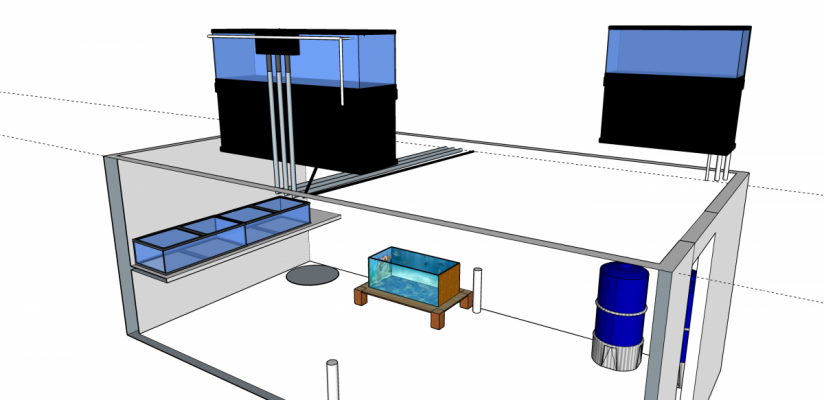- Joined
- Feb 20, 2020
- Messages
- 31
- Reaction score
- 15
I'm trying to tie 2 tanks (180g and 120g) on the first floor and 2 tanks (55g each) in the basement into a single sump (triton 44g). I have a lot of present unknowns. All help/ideas are welcome.
The 180 is presently active and will need to be cut over to the basement sump. It has 3x 1.5" overflow lines with a 3/4" return line split into 4x drilled bulkheads.
The 120 is empty with 2x 1.5" overflow lines and 1x 3/4" return
The 2x 55g basement tanks are meant to be frag tanks and in concept will be low boy breeder tanks connected with a single overflow
The 44g sump is presently behind the 180g in my garage
My big design problem is how best to capture all 7 overflow lines into the sump. I could make a large horizontal manifold of 3" or 2.5" reducing to 1.5" T's. I could possibly fit all 7 lines into the sump either as pvc or with conversions to vinyl. It is even sane to have all of these systems with ~410g share a 44g sump, or does the sump capacity need to be increased?
I've made a crude sketchup in the event it helps spark ideas.

The 180 is presently active and will need to be cut over to the basement sump. It has 3x 1.5" overflow lines with a 3/4" return line split into 4x drilled bulkheads.
The 120 is empty with 2x 1.5" overflow lines and 1x 3/4" return
The 2x 55g basement tanks are meant to be frag tanks and in concept will be low boy breeder tanks connected with a single overflow
The 44g sump is presently behind the 180g in my garage
My big design problem is how best to capture all 7 overflow lines into the sump. I could make a large horizontal manifold of 3" or 2.5" reducing to 1.5" T's. I could possibly fit all 7 lines into the sump either as pvc or with conversions to vinyl. It is even sane to have all of these systems with ~410g share a 44g sump, or does the sump capacity need to be increased?
I've made a crude sketchup in the event it helps spark ideas.

















